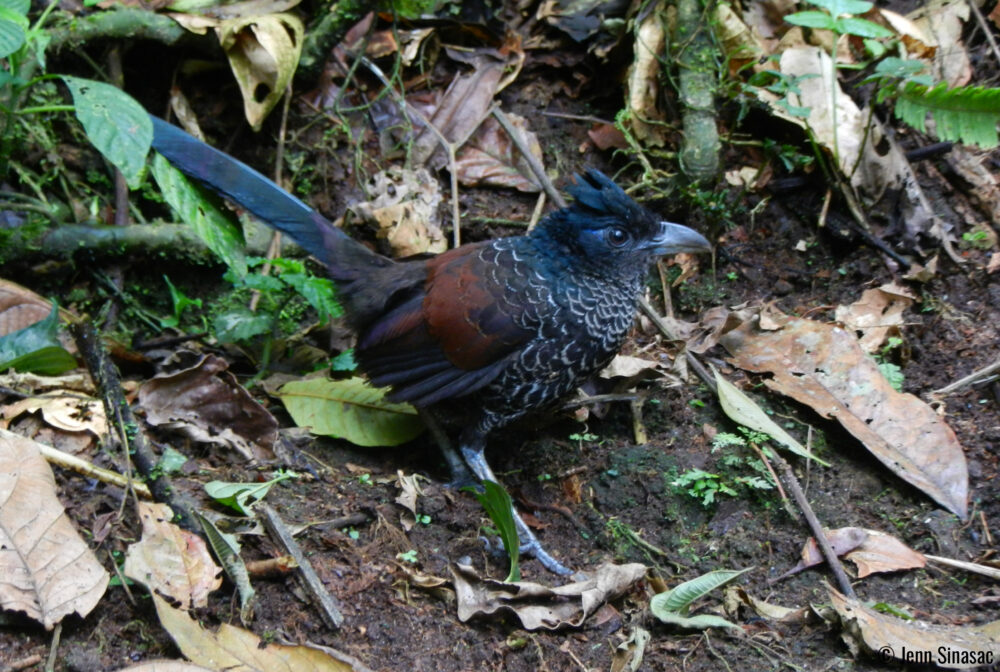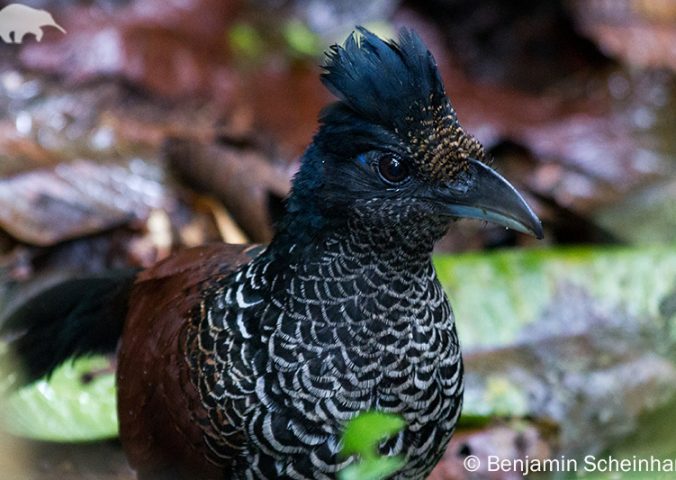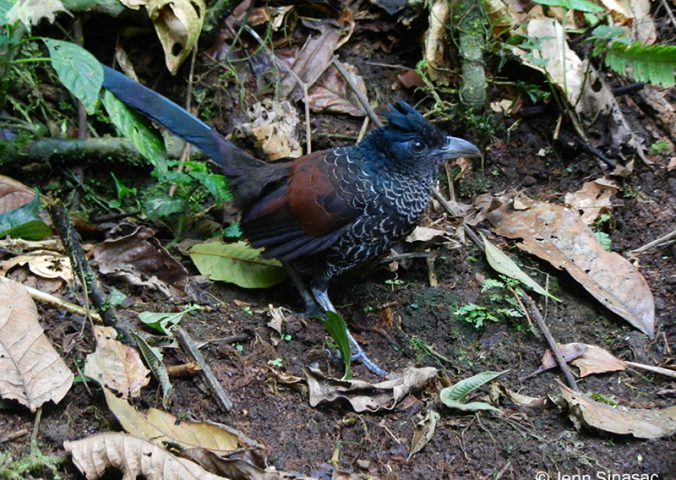About
Despite the large size of the Banded Ground-cuckoo, this species is inconspicuous and not easy to observe.
It is believed to be one of the rarest avian species of Ecuador, and there is very little information existing about this species. The bare blue skin around the Banded Ground-cuckoo’s eye can expand and contract. It is thought this behaviour may be used during display.
This species is part of the Cuculidae family, which are commonly known as the cuckoos. This family diverged from all other birds 49 million years ago, during the Eocene period!
Deforestation of the native forests of Ecuador and Colombia has been ongoing for many years now, but has intensified over the last few decades. Habitat is being rapidly cleared to make way for grazing fields and palm oil, cocoa and banana plantations. This species is known from several protected areas, including Los Farallones de Cali and Munichique National Parks and El Pangan Nature Reserve and more.
- Order: Cuculiformes
- Family: Cuculidae
- Population: 600-1,700
- Trend: decreasing
- Size: 46cm
EDGE Score
Distribution
The species is found in the West Andes in south-west Colombia within an elevation range of 30-1,525 metres above sea level.
Habitat and Ecology
This species lives in wet foothill forests, where it is dependent on primary forest, but also uses adjacent secondary forest. It forages for arthropods on the ground and catches insect prey disturbed by army ants.





